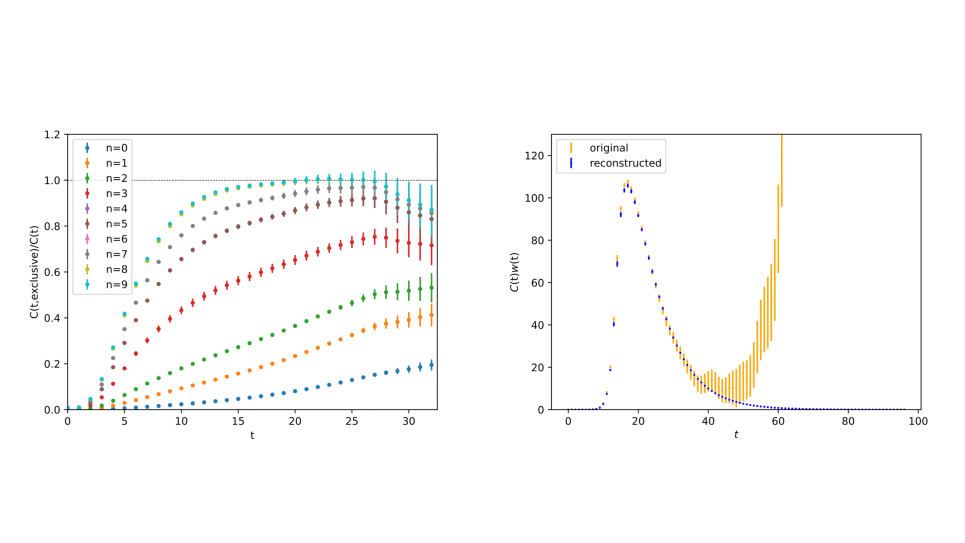
Left panel: Distillation, GEVP-based, exclusive-state reconstructed correlator compared to the inclusive (vector-vector) correlator. Right: the long-distance part of the summand of Eq. 2.5 for both cases. Results are for the MDWF 963 , 2.7 GeV ensemble.